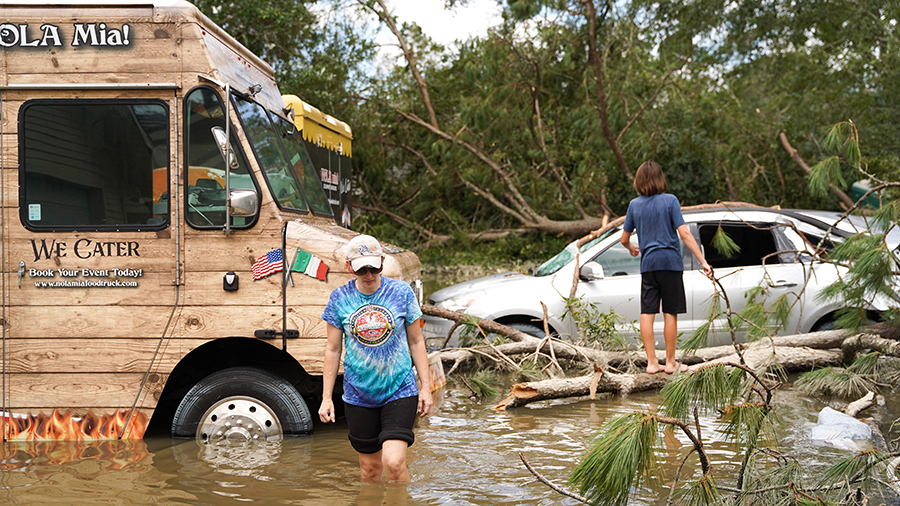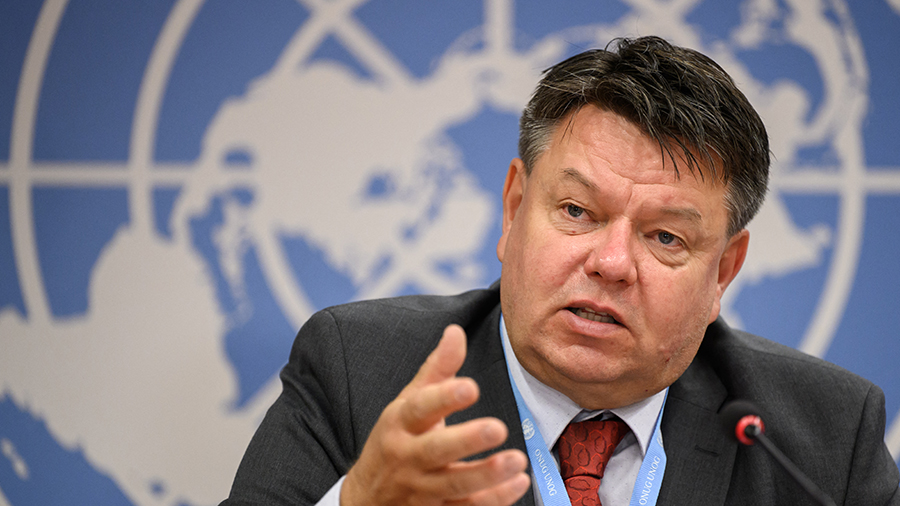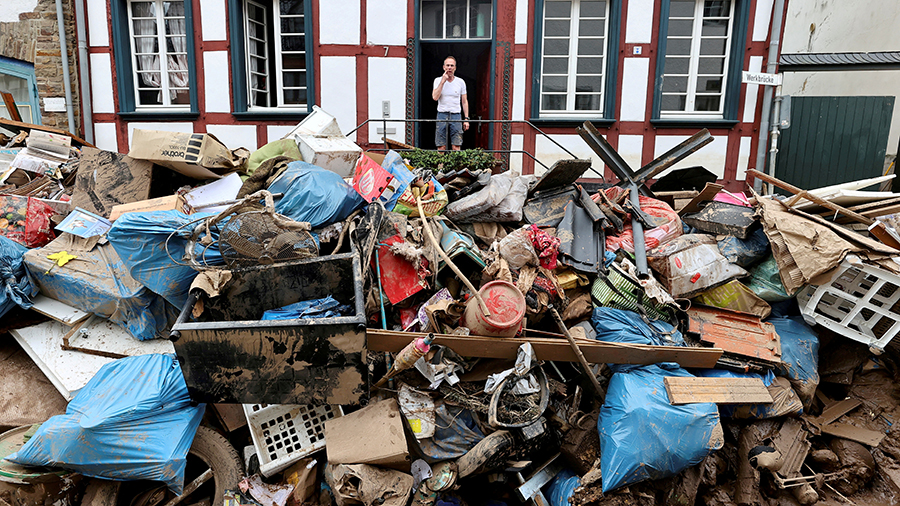Weather-related disasters are now striking the world five times more often than 50 years ago, a report by the United Nations' World Meteorological Organization (WMO) has found.
Between 1979 and 2019, a total of 11,000 weather disasters have caused 2 million deaths and $3.64 trillion in losses. But while the damage caused by these natural catastrophes has increased in the same period, the number of victims has steadily been dropping thanks to the warning systems installed by many countries at risk.

People look at storm damage in floodwaters on August 31, 2021 in Ponchatoula, Louisiana. /Sean Rayford/Getty Images/AFP
People look at storm damage in floodwaters on August 31, 2021 in Ponchatoula, Louisiana. /Sean Rayford/Getty Images/AFP
Out of the total of 2 million deaths since the 1970s, more than 91 percent occurred in developing countries, found the study. The majority of the victims were caused by droughts, alone responsible for some 650,000 deaths, followed by storms, which have left 577,000 people dead.
Floods have killed nearly 59,000 over the past 50 years, while extreme temperatures have killed close to 56,000.
While the death toll might seem big, the number of fatalities caused by weather-related disasters has declined in the past 50 years, falling from more than 50,000 deaths every year in the 1970s to less than 20,000 in the 2010s.
"Quite simply, we are better than ever before at saving lives," WMO Secretary-General Petteri Taalas said in a statement.

Secretary-General of the WMO Petteri Taalas holds a press conference to present an Atlas of Mortality and Economic Losses from Weather, Climate and Water Extremes at the United Nations offices in Geneva on September 1.
/Fabrice Coffrini/AFP
Secretary-General of the WMO Petteri Taalas holds a press conference to present an Atlas of Mortality and Economic Losses from Weather, Climate and Water Extremes at the United Nations offices in Geneva on September 1.
/Fabrice Coffrini/AFP
But the WMO is keeping its optimism in check – according to the report, only half of the agency's 193 member states are currently housing the sort of early warning systems that could save lives, with Africa, parts of Latin America and some Pacific and Caribbean island states lagging.
And the number of people exposed to weather-related disasters is increasing as more people live in risky areas and extreme weather events are likely to increase.
The UN agency linked the fivefold increase in occurrence of heatwaves and floods directly to the climate crisis, warning that this upward trend might continue as the planet continues to warm.

A man looks on outside a house in an area affected by floods caused by heavy rainfall in Bad Muenstereifel, Germany, on July 19, 2021. /Wolfgang Rattay/Reuters
A man looks on outside a house in an area affected by floods caused by heavy rainfall in Bad Muenstereifel, Germany, on July 19, 2021. /Wolfgang Rattay/Reuters
"The number of weather, climate and water extremes are increasing and will become more frequent and severe in many parts of the world as a result of climate change," Taalas said.
On the other hand, the economic cost of weather-related disasters has increased considerably in recent years. Weather-related reported losses were on average $383 million per day in the period from 2010 to 2019 – seven times higher than average daily losses in the 1970s.
The single most fatal event in the past half century was Ethiopia's 1983 drought, with 300,000 deaths, while Hurricane Katrina in 2005 was the most costly, with losses of $163.61 billion.
Seven of the costliest 10 disasters in the past 50 years have happened since 2005, with three of them in 2017 alone: Hurricane Harvey, which caused nearly $97 billion in damages; followed by Maria at close to $70 billion; and Irma at almost $60 billion.
The report comes after a disastrous summer, especially for Europe, where floods killed 177 people in Germany and 31 in Belgium and fires destroyed hundreds of hectares of land in Italy, Greece, France and Turkey.
Cover image: Brandon Bell/Getty Images/AFP
Source(s): AFP
,Reuters

